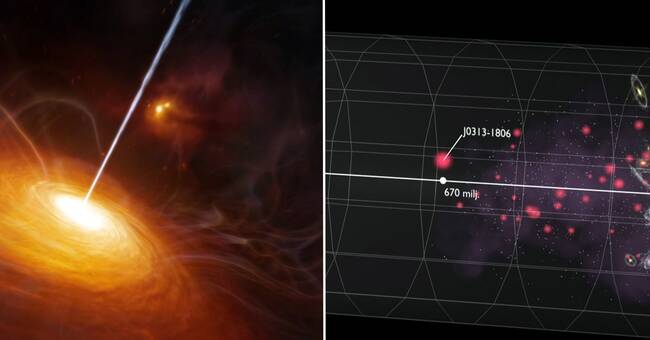Then, 100 million years after the big bang, everything was different in the universe compared to today.
Gas and dust had begun to clump together and the dark matter played a crucial role.
- Dark matter is an as yet unknown component of the universe.
It has never been detected, but very many observations indicate that it is there, says Jonathan Tan.
According to calculations, there should be five times more dark matter than ordinary matter in the universe.
It is not visible but makes itself felt through its gravity.
Early in the universe, lumps were formed that were dominated by dark matter, they grew and became increasingly dense.
Such a lump is called a halo.
- We have a theory that the very first stars may have been born in such a halo of dark matter, says Jonathan Tan, professor of astrophysics at Chalmers University of Technology.
Dark stars
They are called dark stars but were anything but dark.
They shone brightly and got their energy from particles of dark matter colliding and destroying each other.
Then energy arose that made the stars shine.
- They had a completely different structure than ordinary stars, and they could be very heavy, up to 100,000 times heavier than our sun, says Jonathan Tan.
First black hole
And just like when big ordinary stars die, he thinks that even a dark star ended its days in a supernova explosion.
What remained was a dense core, a black hole with a mass close to 100,000 solar masses.
It could have been the universe's first supermassive black hole and was already in place 100 million after the big bang.
If the theory is correct, it could explain how the newly discovered quasar J0313-1806 could have grown so fast and have a mass of 1.6 billion solar masses already 670 million years after the big bang.
New telescope
But how can this theory be proven?
- If there were supermassive black holes 100 million years after the big bang, you might see light from them with the new space-based James Webb telescope that is planned to be launched later this year, says Jonathan Tan.
What remains to be proven is that dark matter consists of the type of particles on which this theory is based.
What dark matter consists of is still one of the great mysteries of physics.

